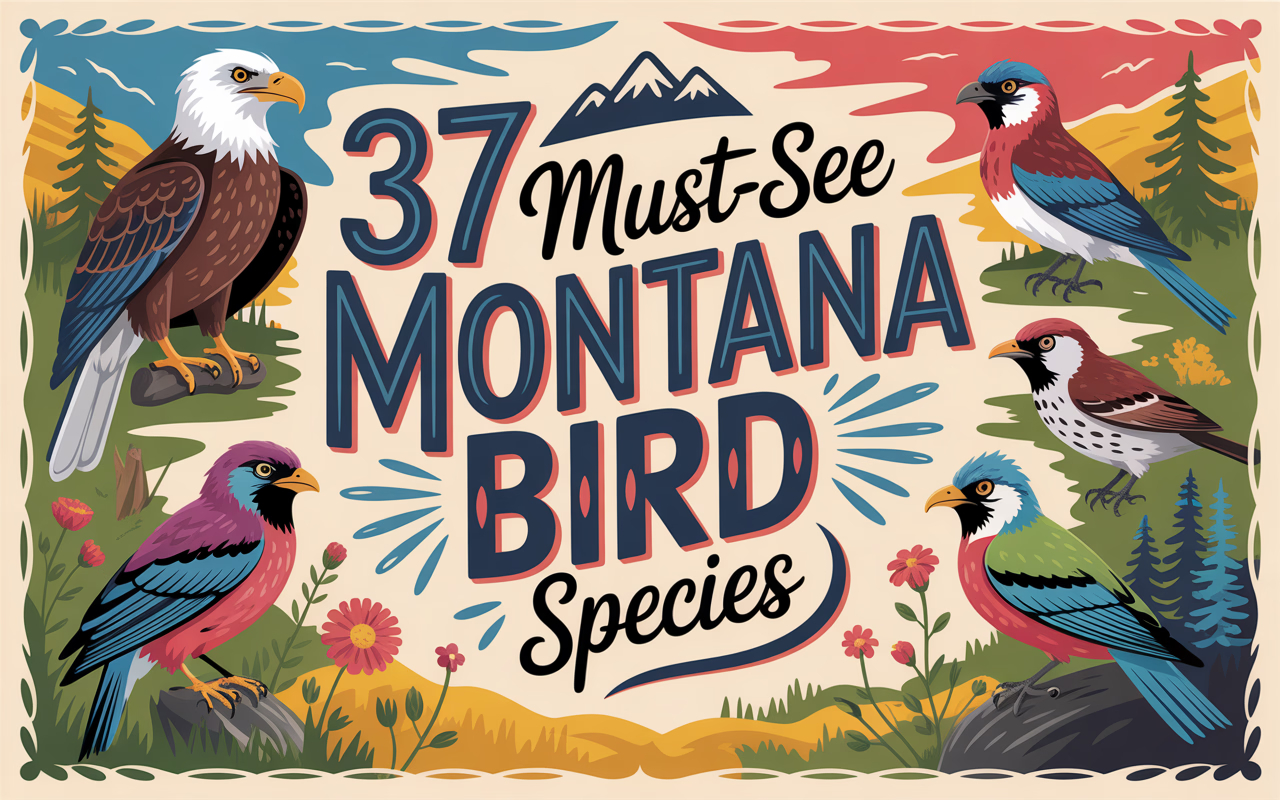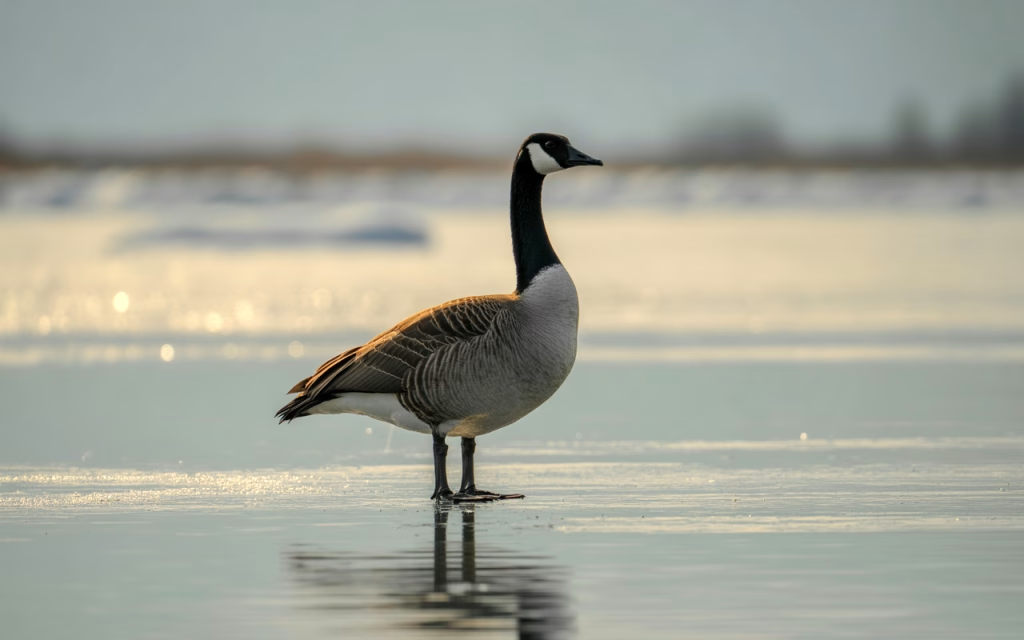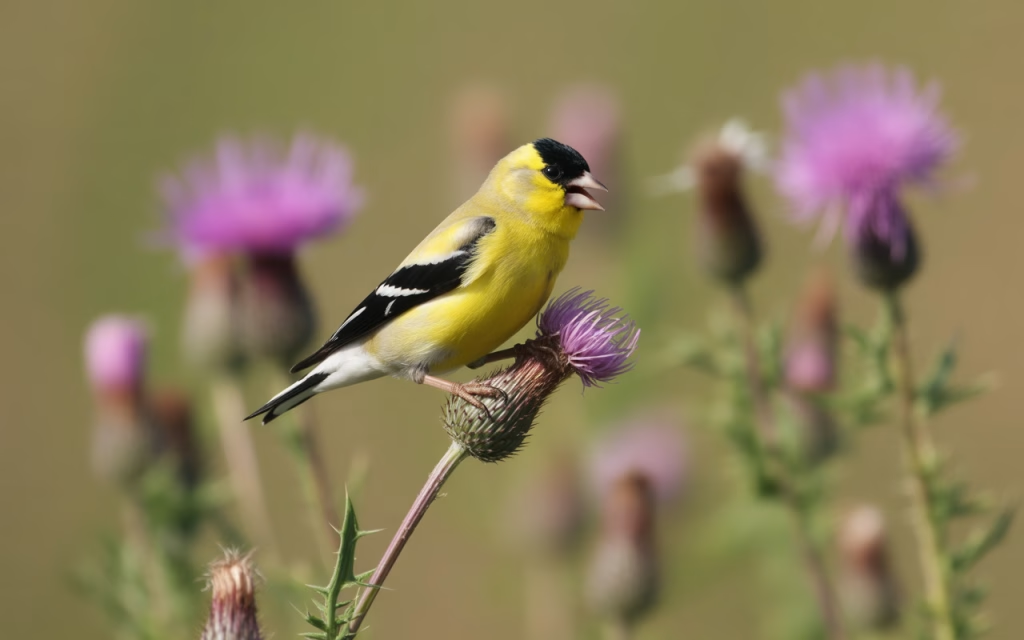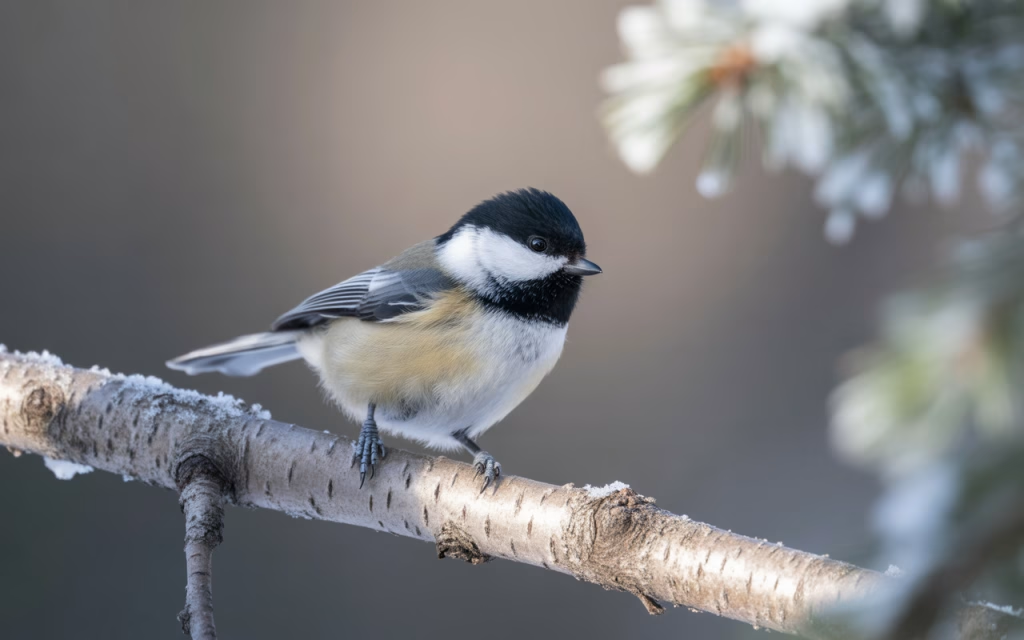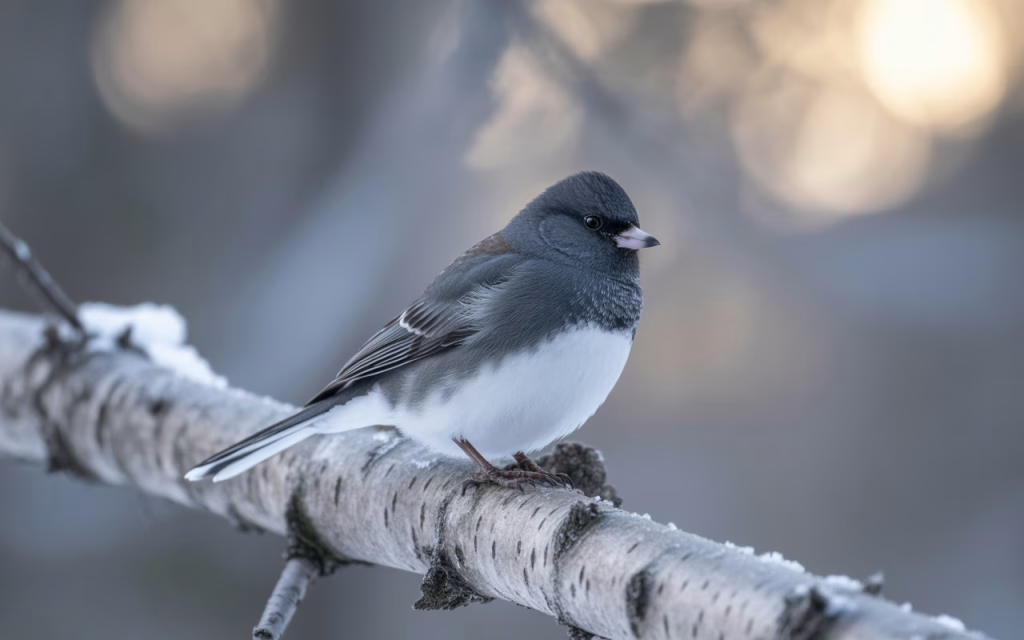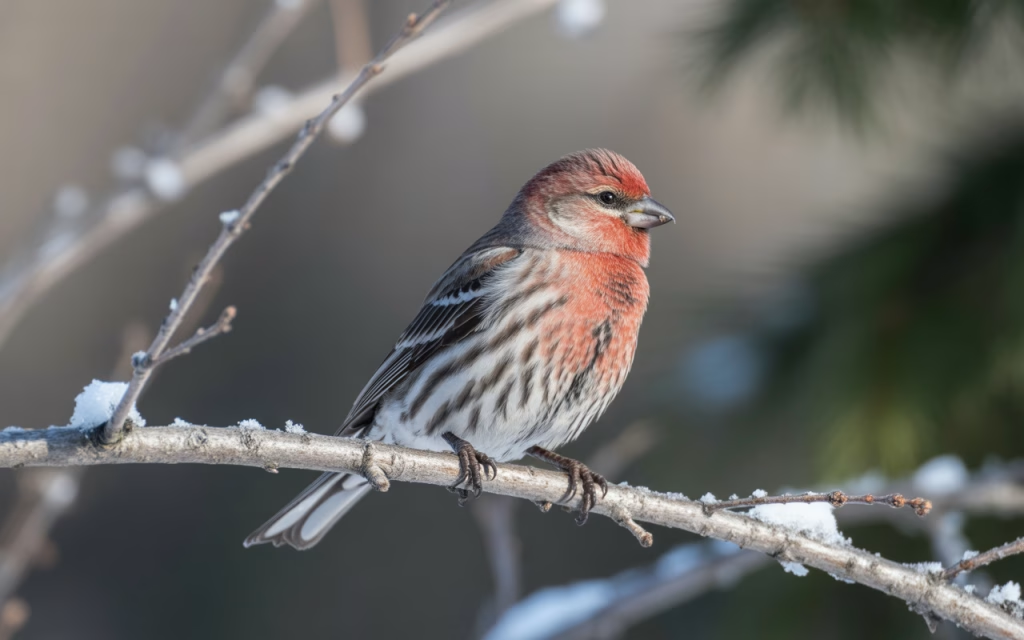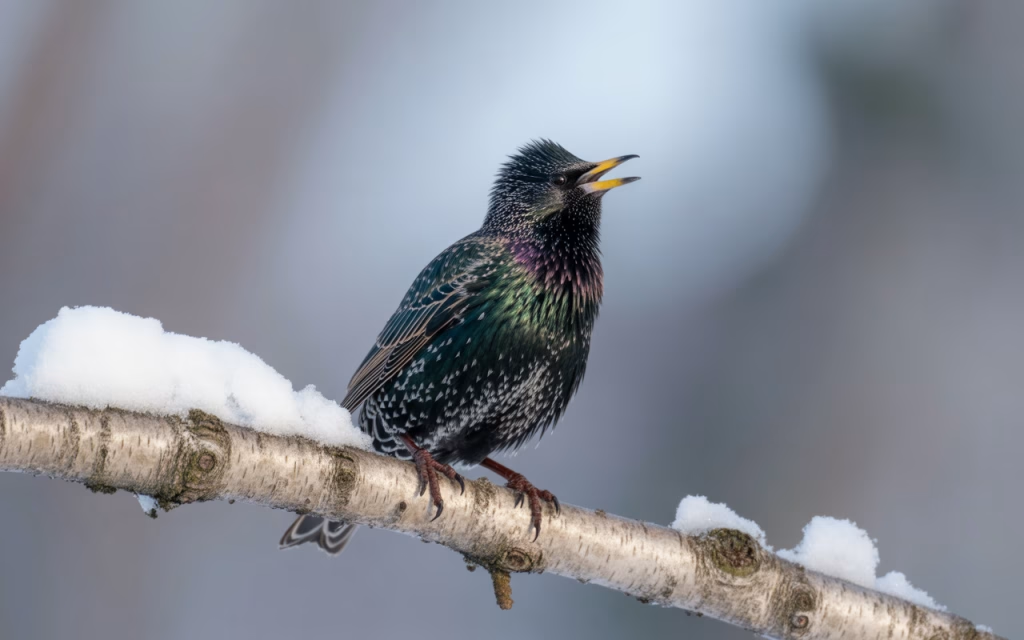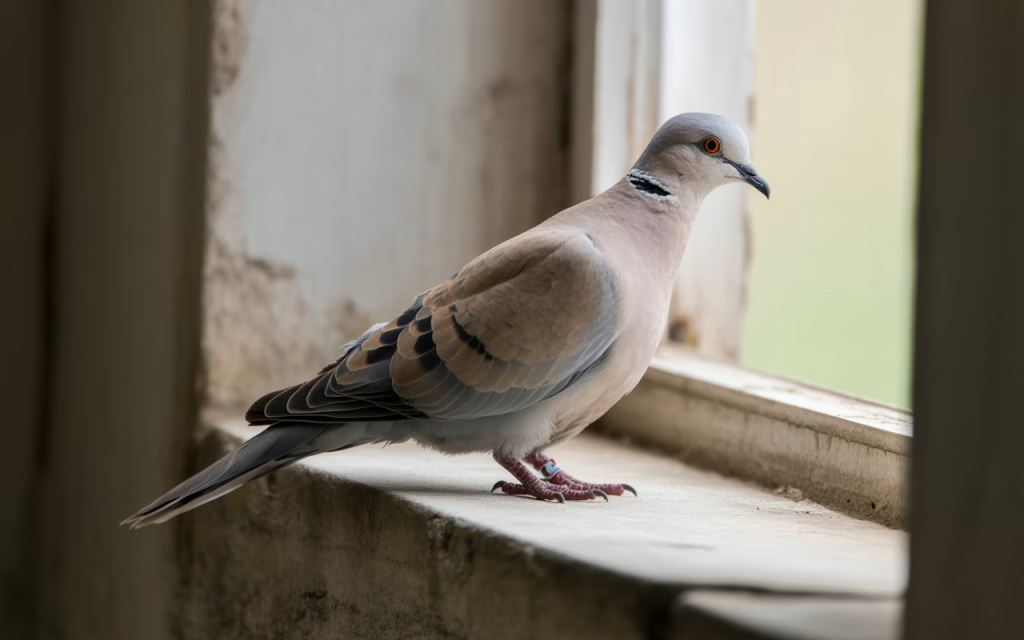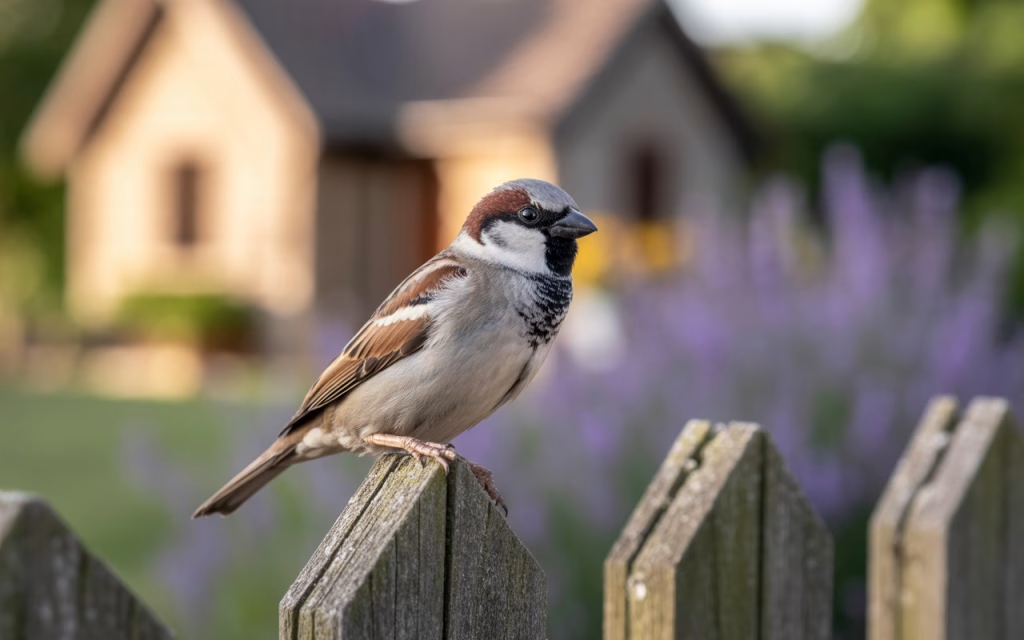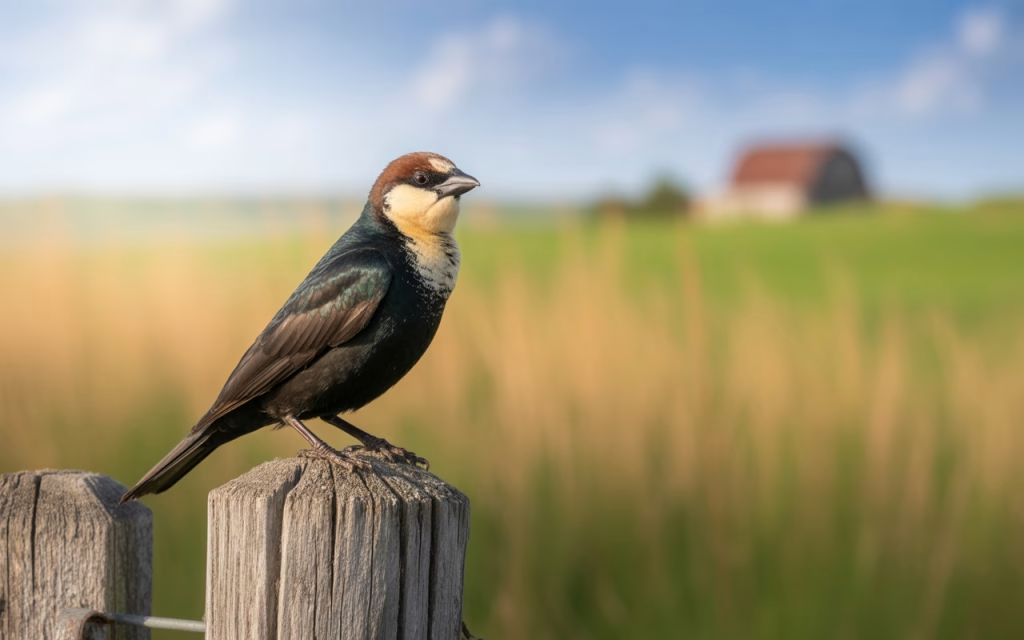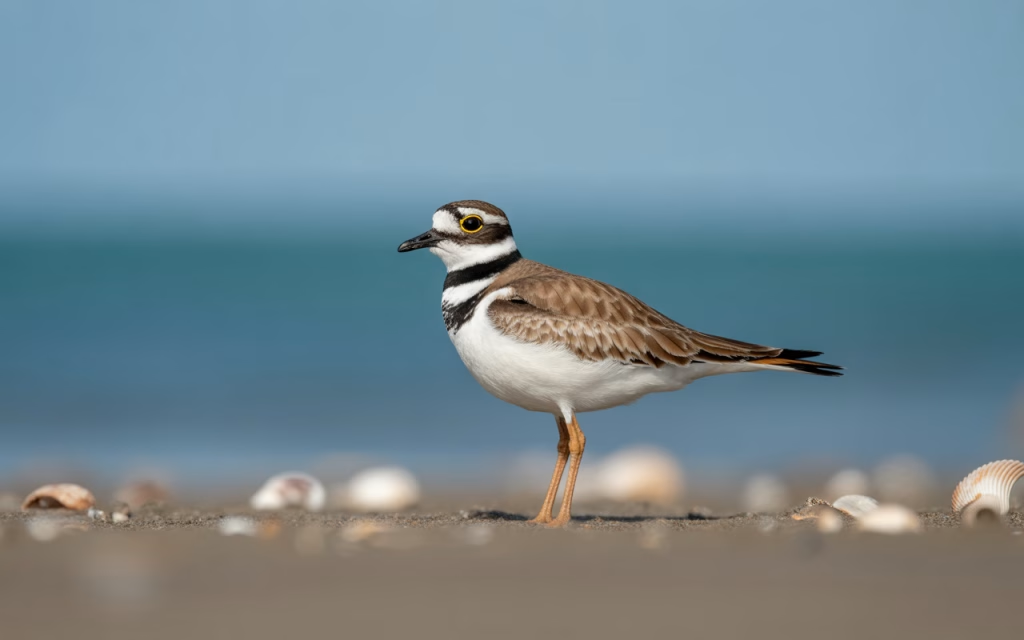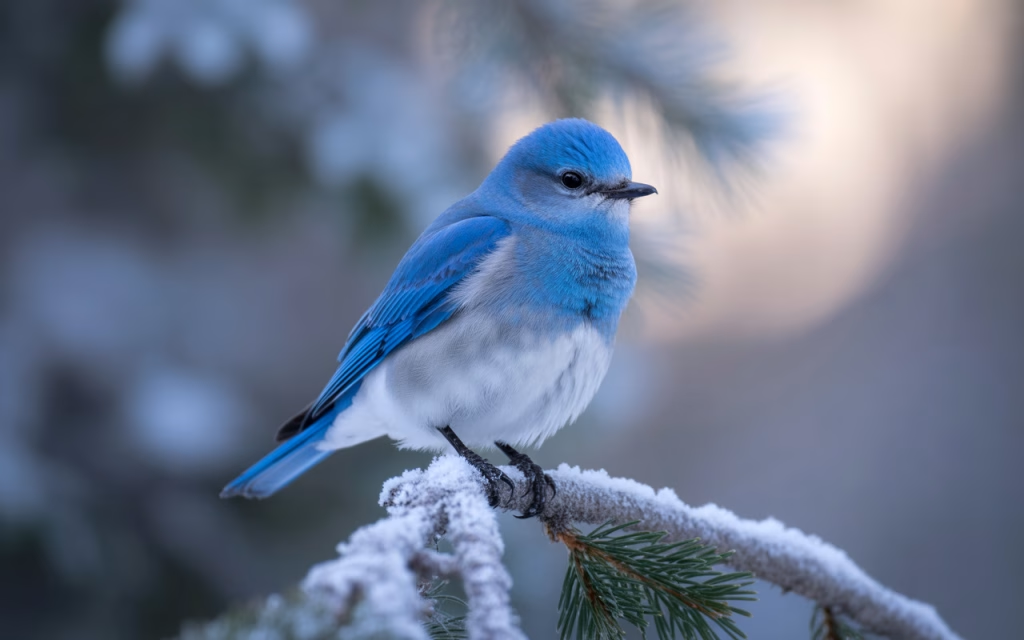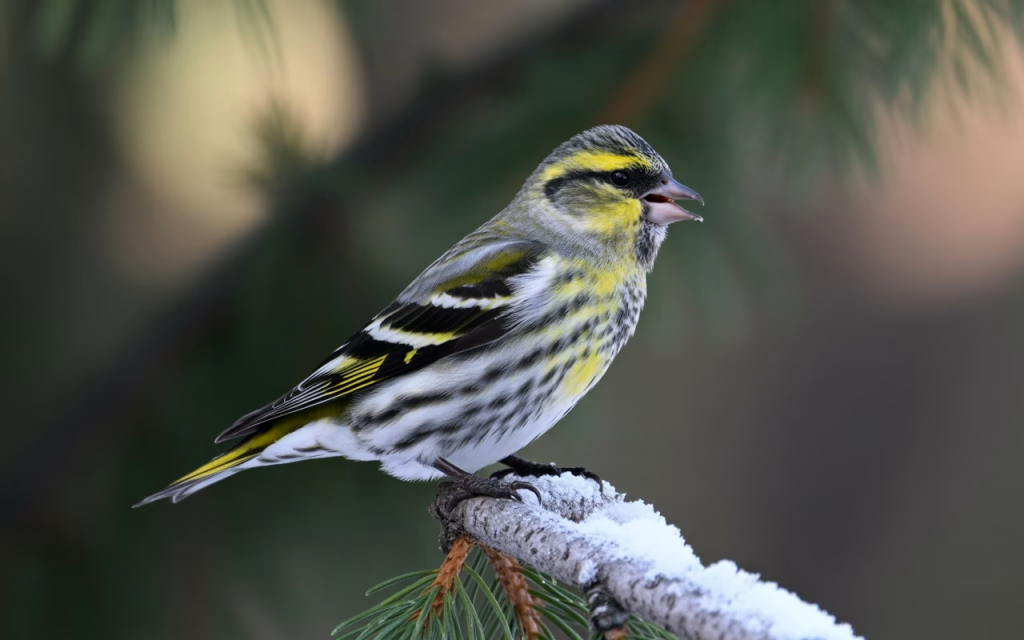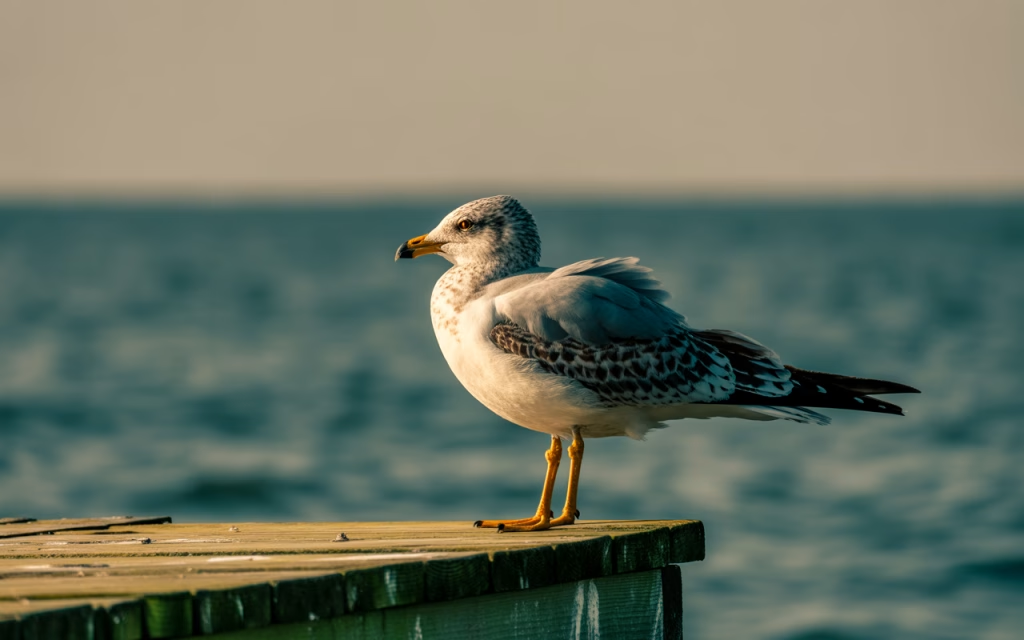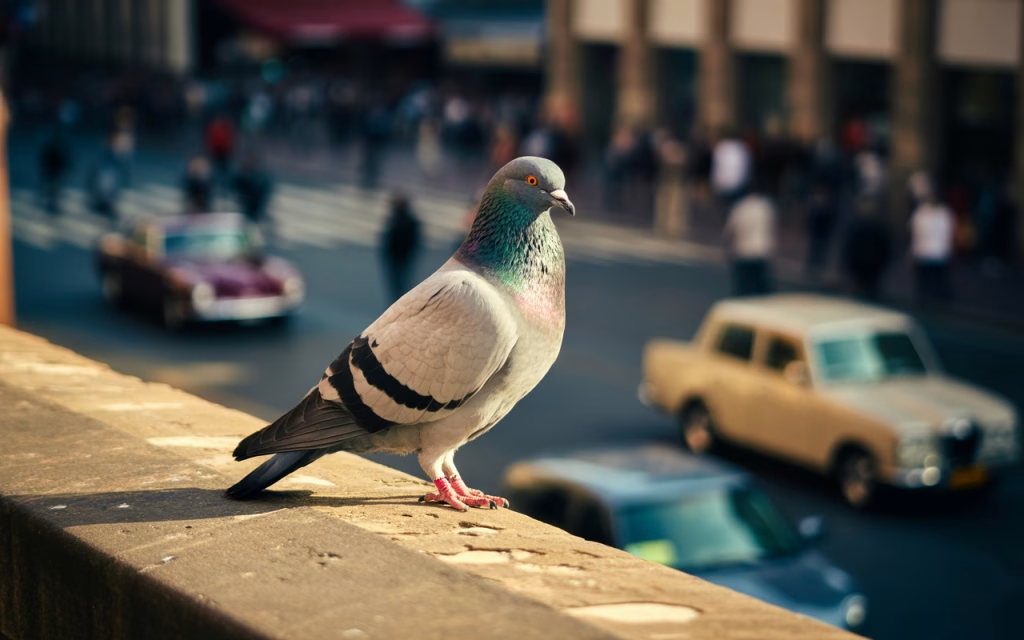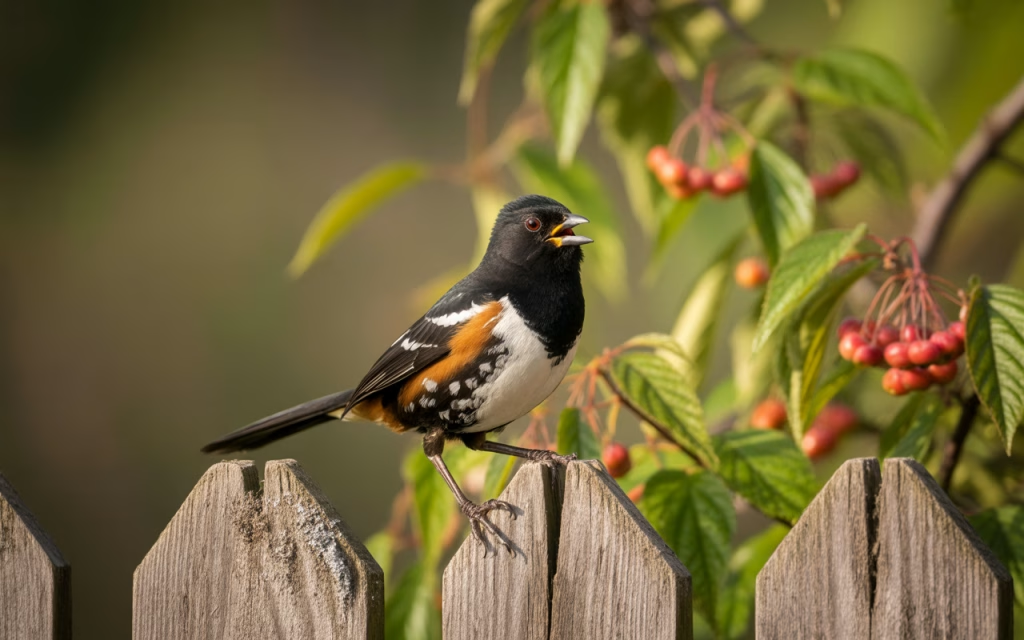Did you know that Montana is home to over 430 bird species, from majestic Bald Eagles soaring over glacial lakes to tiny Mountain Chickadees flitting through pine forests?
For bird enthusiasts and nature lovers alike, the Treasure State offers a wealth of avian wonders waiting to be discovered. But with such diversity, where do you begin?
- Related article: Observing Wildlife in Montana
This comprehensive guide unveils 37 must-see Montana bird species, taking you on a journey through the state’s varied landscapes and ecosystems. Whether you’re an experienced birder or just starting out, you’ll learn how to identify these fascinating creatures, discover the best locations for birdwatching, and gain insights into conservation efforts protecting Montana’s feathered residents.
From common backyard visitors to rare high-altitude specialists, get ready to explore the vibrant world of Montana’s birds and develop a deeper appreciation for the state’s natural heritage.
Table of Contents
Common Montana Birds
Montana’s diverse landscapes create perfect habitats for a remarkable variety of bird species. From the eastern plains to the western mountains, birdwatchers can observe over 400 different species throughout the state. Common Montana birds vary widely in appearance, behavior, and habitat preference, making bird watching in the Treasure State a rewarding experience year-round.
Many resident birds remain in Montana throughout the seasons, adapting to the state’s climate changes. These include the Black-capped Chickadee, which can be spotted in woodlands and suburban areas even during harsh winter months, and the American Robin, which often appears in greater numbers during spring but may stay year-round in milder areas.
Spring brings a dramatic increase in bird activity as migratory species return. Watch for colorful songbirds like the American Goldfinch, which transforms from dull winter plumage to bright yellow breeding colors. Summer visitors include the Common Nighthawk, often seen swooping over towns at dusk, and various swallow species that feast on abundant insects.
Fall migration creates excellent birdwatching opportunities as northern species pass through on their way south. Winter brings its own unique species, including Rough-legged Hawks and Snow Buntings that migrate from the Arctic to spend the colder months in Montana’s relatively milder climate.
For beginning birdwatchers, city parks, backyard feeders, and riparian areas (land along rivers and streams) offer convenient viewing locations. The Missouri River corridor, particularly around Great Falls, attracts numerous water and land birds. For forest species, the pine forests around Missoula and Bozeman provide excellent habitat.
When identifying common Montana birds, pay attention to size, shape, color patterns, behavior, and habitat. Beginners should focus on distinctive features like the Black-billed Magpie’s long tail, the Red-winged Blackbird’s scarlet shoulder patches, or the Northern Flicker’s spotted breast and distinctive flight pattern. A good pair of binoculars and a field guide specific to the Rocky Mountain region will greatly enhance your birdwatching experience.
Water Birds of Montana
Montana’s lakes, rivers, and wetlands attract a diverse array of water birds that add vibrant life to the state’s aquatic ecosystems. From the distinctive American Coot to the elegant Common Merganser, these species have adapted perfectly to Montana’s water habitats.
1. American Coot
The American Coot (Fulica americana) is a medium-sized waterbird that’s often mistaken for a duck. However, this distinctive bird with its slate-gray body and bright white bill is actually more closely related to rails and cranes. Their lobed feet, rather than webbed, make them unique among water birds.
American Coots populate Montana’s marshes, ponds, and lake edges throughout the year, though their numbers increase during migration seasons. They build floating nests anchored to emergent vegetation and feed primarily on aquatic plants, supplemented with small invertebrates.
These social birds can often be seen in large groups called “rafts,” bobbing on water surfaces. When threatened, they prefer to escape by running across the water’s surface with their wings flapping rather than taking immediate flight.
2. Common Goldeneye
The Common Goldeneye is a striking diving duck with distinctive characteristics. Males display a dark iridescent green head, bright yellow eyes, and crisp black-and-white body patterning. Females have chocolate-brown heads with the same yellow eyes that give the species its name.
In Montana, Goldeneyes frequent larger lakes, rivers, and reservoirs, particularly during winter months when northern waters freeze. They nest in tree cavities near water, primarily in the western mountainous regions of the state.
These agile divers feed by plunging beneath the surface to capture aquatic insects, crustaceans, and small fish. Their courtship displays are elaborate, with males throwing their heads back to touch their tails while making distinctive calls.
3. Common Merganser
The Common Merganser is one of Montana’s largest ducks, recognizable by its streamlined body and thin, serrated bill adapted for catching fish. Males have dark green heads, white bodies, and salmon-pink flanks, while females display rusty-brown crested heads with gray bodies.
These fish-eating specialists inhabit clear lakes and rivers throughout Montana, particularly preferring faster-moving waters. Like Goldeneyes, they nest in tree cavities or rock crevices near water.
Mergansers are exceptional underwater swimmers, using their specialized bills to catch fish with remarkable precision. They can often be seen in family groups, with mother birds leading strings of ducklings along shorelines during summer months.
4. Gadwall
The Gadwall is a medium-sized dabbling duck with subtle but elegant plumage. Males have intricate gray-brown patterning with a black rear end, while females display mottled brown coloration similar to female Mallards but with a thinner bill and more delicate head shape.
These understated ducks prefer shallow wetlands with abundant vegetation throughout Montana, particularly in the prairie pothole region in the eastern part of the state.
Unlike diving ducks, Gadwalls feed by tipping forward to reach underwater vegetation, rarely submerging completely. They’re also known to steal food from diving ducks, waiting for them to surface with aquatic plants before snatching them away.
5. Canada Goose
The Canada Goose is perhaps Montana’s most recognizable waterfowl, with its distinctive black head and neck, white “chinstrap,” and tan-gray body. These large, vocal birds have successfully adapted to human-modified landscapes across the state.
While historically migratory, many Canada Geese have become year-round residents in Montana’s urban parks, golf courses, and agricultural areas. They graze on grasses and agricultural crops while nesting on the ground near water, fiercely defending their territory during breeding season.
Their distinctive V-formation flights and resonant honking calls announce seasonal migrations, though increasingly mild winters have allowed more geese to remain in Montana year-round. These adaptable birds represent a conservation success story, having rebounded from historical population declines to sometimes problematic abundance in urban areas.
Songbirds of Montana
Montana’s diverse landscapes provide perfect habitats for a remarkable variety of songbirds. From backyard feeders to mountain forests, these melodious birds bring color and song to the state throughout the year.
6. American Goldfinch
The American Goldfinch is one of Montana’s most vibrant songbirds. Males display brilliant yellow plumage with black wings and a black cap during breeding season, while females and winter males wear a more subdued olive-yellow. These small finches are easily identified by their bouncy, undulating flight pattern and sweet “po-ta-to-chip” call.
American Goldfinches are strict vegetarians, primarily feeding on seeds from thistle, sunflower, and other plants. They’re frequent visitors to backyard feeders stocked with nyjer or sunflower seeds. Unlike many birds, they breed relatively late in the season (July-August) when thistle and milkweed seeds and down are abundant for nest building and feeding young.
7. American Robin
The American Robin serves as Montana’s harbinger of spring with its familiar rusty-orange breast and cheerful “cheerily, cheer up, cheer up, cheerily” song that rings through neighborhoods at dawn. These thrushes are common across the state, adapting well to human-altered landscapes like parks, gardens, and agricultural areas.
Robins feed primarily on earthworms and insects during spring and summer, often seen hopping across lawns, cocking their heads as they listen for worm movement below the surface. In fall and winter, they switch to a fruit-heavy diet, feasting on berries from mountain ash, juniper, and other native plants. Their mud-cup nests are commonly found on horizontal branches or human structures.
8. Black-Capped Chickadee
The Black-Capped Chickadee is a year-round Montana resident beloved for its curious nature and distinctive “chick-a-dee-dee-dee” call. These small birds feature a black cap and bib contrasted against white cheeks and a grayish back. The number of “dee” notes in their call indicates their level of alarm or excitement.
Remarkably adaptable, chickadees survive brutal Montana winters by entering regulated hypothermia at night, lowering their body temperature to conserve energy. They cache seeds and insects in thousands of hiding spots, with specialized brain development allowing them to remember these locations for weeks. Their diet consists of insects and spiders during summer, supplemented with seeds and berries in winter.
9. Dark-Eyed Junco
The Dark-Eyed Junco, often called the “snowbird,” arrives in Montana valleys as winter approaches. Most Montana juncos belong to the “Oregon” or “Slate-colored” subspecies, featuring dark hoods, white bellies, and distinctive white outer tail feathers that flash during flight. Their gentle twittering calls and trilling songs are subtle but pleasant additions to winter soundscapes.
These ground-feeding birds hop beneath feeders and shrubs, searching for fallen seeds. During breeding season, they move to higher elevations in Montana’s mountains, building well-concealed nests on or near the ground. Juncos primarily eat seeds from grasses and weeds but incorporate insects into their diet during summer months.
10. House Finch
The House Finch brightens Montana neighborhoods with the male’s rosy red head, breast, and rump contrasting against brown streaked bodies. Females are streaked brown without the red coloration. Their cheerful, warbling song consists of a series of short notes that rise and fall in pitch.
Originally native to western North America, House Finches have successfully expanded across the continent. They thrive in human-modified environments, from urban centers to rural farms. These social birds feed primarily on seeds, buds, and fruits, readily visiting backyard feeders for sunflower seeds. During breeding season, they supplement their diet with some insects. House Finches often nest in hanging planters, wreaths, or building crevices, raising multiple broods each summer.
Raptors and Birds of Prey
Montana’s vast landscapes and diverse ecosystems provide ideal hunting grounds for an impressive array of raptors and birds of prey. These magnificent birds sit at the top of the avian food chain, with powerful talons, hooked beaks, and exceptional vision that make them formidable hunters.
11. Bald Eagle
The Bald Eagle stands as America’s national symbol and one of Montana’s most majestic birds. With its distinctive white head and tail contrasting against a dark brown body and wingspan reaching up to 7.5 feet, this raptor commands attention wherever it soars.
Adult Bald Eagles are unmistakable with their snow-white heads and tails, but juveniles sport mottled brown plumage for the first 4-5 years of life, often causing confusion with Golden Eagles. Their massive yellow beaks and feet set them apart from other large birds of prey.
Montana hosts both year-round resident Bald Eagles and migratory populations. The state’s numerous lakes, rivers, and reservoirs provide ideal habitat, with concentrations particularly high along the Flathead Lake, Missouri River, and Yellowstone River systems.
Nesting habits of Montana’s Bald Eagles are fascinating and elaborate. They construct some of the largest nests of any North American bird, building massive structures in tall trees near water bodies. These nests, called eyries, can reach 6 feet in diameter and weigh up to a ton as the eagles add material year after year. The breeding season begins in late winter, with 1-3 eggs typically laid between February and April. Both parents share incubation duties for about 35 days and continue to care for the young until they fledge at approximately 10-12 weeks of age.
The conservation story of the Bald Eagle in Montana represents one of America’s greatest wildlife recovery successes. By the mid-20th century, these magnificent birds faced potential extinction due to habitat loss, hunting, and the devastating effects of DDT pesticide, which caused eggshell thinning and reproductive failure. In the 1960s, fewer than 30 breeding pairs remained in Montana.
Following the 1972 ban on DDT and protections under the Endangered Species Act, Bald Eagles made a remarkable comeback. Today, Montana boasts over 700 breeding pairs, with numbers continuing to increase. The species was officially removed from the endangered species list in 2007, though it remains protected under the Bald and Golden Eagle Protection Act.
Bald Eagles can be observed year-round in Montana, with winter offering particularly spectacular viewing opportunities when hundreds of eagles gather along ice-free sections of rivers to feed on spawning salmon and other fish. Prime viewing locations include the Missouri River near Great Falls, Flathead Lake, and the Kootenai River.
Despite their recovery, Bald Eagles still face threats from habitat degradation, lead poisoning from consuming wounded game animals, and collisions with power lines. Conservation efforts continue to focus on protecting nesting sites, maintaining water quality, and educating the public about these magnificent birds that have become living symbols of conservation success in Montana.
Corvids of Montana
Montana’s landscape is home to some of the most intelligent birds on the planet – the corvids. This remarkable family includes crows, ravens, and magpies, all displaying problem-solving abilities and complex social behaviors that have fascinated scientists and bird enthusiasts alike.
12. American Crow
The American Crow (Corvus brachyrhynchos) is a familiar sight across Montana’s urban and rural landscapes. These glossy black birds measure 17-21 inches in length and are highly adaptable, thriving in diverse environments from city parks to agricultural fields.
American Crows are known for their remarkable intelligence and problem-solving capabilities. They can fashion and use tools, remember human faces for years, and even hold “funerals” when a fellow crow dies. Their diet is incredibly varied – from insects and small animals to fruits, nuts, and even garbage – showcasing their adaptability.
These birds form tight family units where offspring from previous years help parents raise new nestlings, demonstrating complex social structures rarely seen in the avian world. Their distinctive “caw-caw” calls serve multiple purposes, from warning of predators to maintaining group cohesion.
13. Black-Billed Magpie
The Black-billed Magpie (Pica hudsonia) is perhaps Montana’s most visually striking corvid, with its iridescent blue-green wings, long tail, and bold black and white pattern. These birds are commonly spotted in open country, meadows, and the edges of forests throughout the state.
Magpies display remarkable cognitive abilities, including self-recognition in mirrors – a trait shared with only a handful of animals worldwide. They’re notorious for their curious nature and tendency to collect shiny objects, a behavior that has inspired numerous folklore tales.
In Montana’s ecosystem, magpies serve as nature’s cleanup crew, often seen feeding on carrion alongside ravens. They build elaborate dome-shaped nests with two entrances, sometimes reusing and adding to them over multiple years. Their social structure includes loose flocks during non-breeding seasons, with pairs maintaining territories during nesting periods.
14. Common Raven
The Common Raven (Corvus corax) is the largest corvid in Montana and one of the heaviest passerine birds in North America. Often confused with crows, ravens are significantly larger, with a more wedge-shaped tail, shaggy throat feathers, and a deeper, more resonant croaking call.
Ravens exhibit perhaps the most impressive intelligence among corvids. They’ve been observed using logic to solve multi-step problems, playing games with each other, and even planning for the future – cognitive abilities once thought unique to primates. In captivity, ravens have demonstrated vocabulary comparable to some marine mammals.
Throughout Montana’s mountains and forests, ravens form strong pair bonds that often last a lifetime. They perform spectacular aerial acrobatics, including barrel rolls and somersaults, especially during courtship. Their deep cultural significance to Native American tribes in Montana, particularly the Blackfeet and Crow Nations, reflects their perceived role as tricksters, messengers, and creators in various myths.
The corvids of Montana represent more than just common birds – they’re among the most intelligent wild creatures you might encounter in the state. Their problem-solving abilities, complex social structures, and adaptability have allowed them to thrive alongside human development, making them perfect subjects for observation whether you’re in Glacier National Park or your own backyard.
Woodpeckers and Tree-Dwelling Birds
Montana’s forests and woodlands host a fascinating array of tree-dwelling birds, with woodpeckers being among the most distinctive. These specialized birds have evolved remarkable adaptations for their arboreal lifestyle, including strong clinging feet, stiff tail feathers for support, and chisel-like bills perfect for excavating wood.
15. Downy Woodpecker
The Downy Woodpecker (Dryobates pubescens) stands out as Montana’s smallest woodpecker species, measuring just 5-7 inches in length. This charming bird features a striking black and white pattern with males sporting a distinctive red patch on the back of their heads. Don’t let their diminutive size fool you—these birds are powerhouses of the forest ecosystem.
Downies demonstrate remarkable adaptability, thriving in diverse wooded habitats across Montana from mature forests to suburban parks and backyard gardens. Their small size allows them to forage on slender branches that larger woodpeckers cannot access, reducing competition for food resources.
Their drumming pattern—a short, rapid burst of pecks—serves as both communication and territorial announcement. Unlike many woodpecker species that produce slower, more deliberate drumming, the Downy’s rapid-fire percussion creates a distinctive sound that carries through the forest. During breeding season, males intensify their drumming to attract mates and establish territory boundaries.
Ecologically, Downy Woodpeckers provide invaluable services to Montana’s forests. They consume vast quantities of wood-boring insects and their larvae, helping control potential pest populations that could damage trees. Their abandoned nesting cavities create essential housing for countless secondary cavity-nesters like chickadees, nuthatches, and small owls that cannot excavate their own homes.
These industrious birds remain in Montana year-round, making them reliable visitors to backyard feeders during harsh winter months when they particularly appreciate offerings of suet and black oil sunflower seeds. Their presence in residential areas helps control garden pests while delighting observers with their acrobatic foraging behaviors.
Introduced and Non-Native Species
Montana’s bird population includes several non-native species that have been introduced to North America over the past few centuries. These birds have adapted remarkably well to Montana’s varied landscapes and have become common sights throughout the state.
16. European Starling
The European Starling was famously introduced to North America in the 1890s when approximately 100 birds were released in New York City’s Central Park by Shakespeare enthusiasts who wanted to introduce all birds mentioned in Shakespeare’s works. Today, there are over 200 million starlings across the continent, including substantial populations in Montana.
These medium-sized birds display iridescent black plumage with purple and green sheens, and during winter, their bodies become covered with white speckles. European Starlings are highly adaptable and can be found in urban areas, agricultural fields, and open woodlands throughout Montana.
Their aggressive nature and ability to outcompete native cavity-nesting birds for nesting sites has made them controversial. They form massive murmurations (flocks) that can number in the thousands, creating spectacular aerial displays but also causing agricultural damage and displacing native species.
17. Eurasian Collared-Dove
The Eurasian Collared-Dove has one of the most remarkable expansion stories of any bird species. Originally native to Asia, these doves spread across Europe in the 20th century and were introduced to the Bahamas in the 1970s. From there, they reached Florida by the 1980s and have since spread rapidly across North America, including Montana.
These pale gray doves are easily identified by the distinctive black collar on the back of their neck. Larger than mourning doves, they have adapted well to human environments and are commonly found in towns, suburban areas, and farmlands across Montana.
Unlike many invasive species, Eurasian Collared-Doves don’t appear to significantly harm native bird populations, though research continues on their ecological impact as their numbers grow in Montana.
18. House Sparrow
The House Sparrow, native to Eurasia and North Africa, was introduced to Brooklyn, New York, in the 1850s and has since become one of the most widespread birds in North America. These small, stocky birds thrive in human-modified environments throughout Montana.
Male House Sparrows sport gray crowns, chestnut backs, and black bibs, while females are a more subdued brown with streaking. Almost exclusively associated with human habitations, they’re abundant in urban centers, agricultural areas, and around farms where they can access grain and seeds.
House Sparrows are aggressive competitors that will evict native birds from nesting sites and have contributed to declines in some native cavity-nesting species like Eastern Bluebirds and Tree Swallows. In Montana, their adaptability and year-round residence have made them a permanent fixture of the state’s avian landscape.
19. Distinctive Montana Birds (Common Grackle)
Montana’s diverse landscapes harbor several distinctive bird species that stand out due to their unique appearances, behaviors, or ecological roles. These avian residents contribute significantly to the state’s rich biodiversity and offer birdwatchers memorable encounters.
The Common Grackle (Quiscalus quiscula) represents one of Montana’s most distinctive birds, despite its somewhat misleading name. These medium-sized blackbirds are anything but “common” in appearance, sporting iridescent feathers that shimmer with hues of blue, purple, and bronze when caught in sunlight. Male grackles particularly stand out with their glossy plumage and striking yellow eyes that seem to pierce through their surroundings.
In Montana, Common Grackles primarily inhabit the eastern and central portions of the state, favoring open woodlands, agricultural areas, and suburban environments. Their range has expanded westward over recent decades as human development has created favorable habitats with scattered trees and open feeding areas.
What truly distinguishes the Common Grackle is its remarkable behavioral adaptability. These birds display impressive intelligence and problem-solving abilities, often working cooperatively to access food sources. During breeding season, they form loose colonies, with multiple pairs nesting in close proximity while defending individual territories within the colony.
Grackles are omnivorous opportunists, consuming everything from seeds and grains to insects, small vertebrates, and even other birds’ eggs. Their feeding behavior includes a distinctive technique called “kleptoparasitism,” where they steal food from other birds. Montana farmers sometimes view grackles with mixed feelings, as these birds can damage crops but also consume significant numbers of agricultural pests.
Perhaps most distinctive is the Common Grackle’s vocalization—a harsh, creaky call often described as sounding like a rusty gate hinge. During spring, male grackles perform elaborate courtship displays, puffing their feathers, spreading their tails, and producing a series of squeaks and rattles while bowing dramatically to impress females.
The Common Grackle’s adaptability has allowed it to thrive despite habitat changes, making it an excellent example of a species that has adjusted to human-modified landscapes while maintaining its distinctive characteristics and behaviors that fascinate Montana birdwatchers.
Parasitic and Unique Behavior Birds
Among Montana’s diverse bird population, some species stand out for their unusual and sometimes controversial behaviors. The Brown-Headed Cowbird represents one of the most fascinating examples of avian behavioral adaptation in the state.
20. Brown-Headed Cowbird
The Brown-Headed Cowbird (Molothrus ater) is perhaps Montana’s most notorious avian parasite. Male cowbirds are easily identified by their glossy black bodies and distinctive brown heads that appear almost like they’ve been dipped in chocolate. Females are less conspicuous with their plain grayish-brown plumage, allowing them to move stealthily among potential host nests.
What makes cowbirds remarkable is their breeding strategy – they are obligate brood parasites, meaning they never build nests or raise their own young. Instead, female cowbirds lay their eggs in the nests of other bird species, effectively outsourcing parental duties. A single female can produce up to 40 eggs in a breeding season, distributing them among dozens of unsuspecting host nests.
In Montana, cowbirds commonly target over 200 different host species, with particular success parasitizing Yellow Warblers, Song Sparrows, Red-winged Blackbirds, and American Robins. The cowbird egg typically hatches earlier than the host’s eggs, and the chick grows faster, often outcompeting the host’s own offspring for food and attention.
This parasitic behavior evolved as cowbirds historically followed nomadic bison herds across the plains, making traditional nesting impractical. As humans fragmented forests and introduced cattle, cowbirds expanded their range dramatically across Montana and beyond.
From a conservation perspective, Brown-headed Cowbirds present a complex challenge. While they’re native to Montana, their parasitism can threaten already vulnerable bird populations, particularly in fragmented habitats where edge-dwelling cowbirds gain access to forest interior species unprepared for their parasitic tactics. Some songbird species, like the Yellow Warbler, have developed defensive strategies such as recognizing cowbird eggs and either ejecting them or building new nests overtop.
Observing the interactions between cowbirds and their hosts offers birdwatchers a window into the complex ecological relationships that have evolved over millennia. While their behavior might seem harsh by human standards, cowbirds represent a fascinating evolutionary adaptation that has allowed them to thrive across Montana’s changing landscape.
21. Killdeer
The Killdeer is one of Montana’s most recognizable shorebirds with its distinctive double black breast bands and striking orange-red eye ring. This medium-sized plover reaches about 10 inches in length with a wingspan of 24 inches. Its brown upperparts contrast beautifully with its white underparts, and when in flight, you’ll notice a rusty-orange rump.
Killdeer are famous for their theatrical “broken-wing display,” a clever distraction technique where they pretend to be injured to lure predators away from their nests. Their name comes from their loud, piercing “kill-deer” call that echoes across open spaces.
Unlike many shorebirds, Killdeer aren’t tied to water bodies. They prefer open landscapes including agricultural fields, golf courses, parking lots, and gravel roads. In Montana, they’re widespread from spring through fall, with some remaining year-round in milder areas. Look for them in the Bitterroot Valley, around Helena, and throughout the eastern plains.
22. Mallard
The Mallard is Montana’s most common and recognizable duck species. Male Mallards sport a glossy green head, narrow white collar, chestnut breast, and yellow bill, while females display mottled brown plumage with an orange-brown bill. Both sexes have a distinctive blue speculum (wing patch) bordered by white.
These adaptable ducks can be found in virtually any wetland habitat across Montana, from mountain lakes to city park ponds. They’re opportunistic feeders, “tipping up” to forage underwater vegetation or dabbling along shorelines for insects, seeds, and small aquatic creatures.
Mallards are present year-round in Montana where open water remains available. During summer months, they’re abundant throughout the state, particularly in the prairie pothole region of northeastern Montana, Freezout Lake Wildlife Management Area, and the wetlands of the Flathead Valley. Their familiar “quack” is the classic duck sound most people recognize.
23. Mountain Bluebird
Montana’s state bird, the Mountain Bluebird, is a breathtaking sight with its sky-blue plumage. Males display an intense, uninterrupted azure blue on their heads and backs with slightly paler blue underparts. Females are more subtly colored with gray-brown upperparts, blue wings and tail, and a pale blue wash on their flanks.
These cavity-nesting birds favor open habitats at higher elevations, including mountain meadows, forest edges, and recently burned areas. They hunt by perching on low branches or fence posts, then dropping to the ground to catch insects.
In Montana, Mountain Bluebirds arrive in March and April, breeding throughout the western and central mountainous regions. Prime viewing locations include the open country around Missoula, the grasslands of the National Bison Range, and meadows throughout Glacier National Park. Their soft, warbling song and gentle manner have endeared them to Montanans, who have established extensive bluebird trail networks with nesting boxes to support their populations.
24. Mountain Chickadee
The Mountain Chickadee (Poecile gambeli) is a charismatic small bird that brings charm to Montana’s coniferous forests. Easily identified by its distinctive white eyebrow stripe against a black cap and eye line, this bird has a gray back, wings, and tail with whitish underparts. At about 5-6 inches long, Mountain Chickadees have a plump appearance with a relatively large head and short bill that gives them an endearing, almost cartoon-like quality.
These active birds announce their presence with their familiar “chick-a-dee-dee” call, though their version is typically faster and higher-pitched than their Black-capped cousins. During breeding season, males sing a clear, whistled “fee-bee-bee” song that echoes through the pine forests. Their vocalizations are remarkably complex for such a small bird, with various alarm calls and social communications.
Mountain Chickadees are cavity nesters, typically selecting natural tree hollows or abandoned woodpecker holes in coniferous trees. The female builds the nest using moss, plant fibers, and animal hair, then lays 5-9 small white eggs speckled with reddish-brown. She incubates the eggs for about two weeks while the male brings her food. After hatching, both parents feed the nestlings for another 18-21 days before they fledge.
In Montana, Mountain Chickadees are year-round residents primarily found in the western and central mountainous regions. They prefer higher-elevation coniferous forests, particularly those with pines, firs, and spruces. During harsh winter months, they may move to slightly lower elevations but rarely undertake long migrations. These hardy birds have adapted to Montana’s cold winters by caching seeds and developing remarkable spatial memory to retrieve their food stores when needed.
25. Mourning Dove
The Mourning Dove (Zenaida macroura) is one of Montana’s most widespread birds, recognizable by its slender body, small head, and long, pointed tail. These medium-sized birds (9-13 inches long) display soft gray-brown plumage above with a pinkish wash on the breast and pale underparts. Males and females look similar, though males have a slight iridescent pink-purple sheen on their neck and a more bluish crown.
The Mourning Dove’s name comes from its distinctive vocalization—a soft, mournful “coo-OO-oo-oo-oo” that carries surprisingly far across Montana’s open landscapes. This plaintive cooing is primarily given by males during breeding season. When startled into flight, their wings produce a distinctive whistling sound created by specialized wing feathers.
These prolific breeders can raise multiple broods each year in Montana, sometimes producing up to six clutches in a single season. Their nesting habits are notably minimal—males gather twigs and other materials while females construct flimsy, platform-like nests in trees, shrubs, or occasionally on the ground. The female typically lays two white eggs that both parents incubate for about 14 days. Young doves grow remarkably quickly, often leaving the nest just 12-15 days after hatching.
Mourning Doves are found throughout Montana but are most common in open countryside, agricultural areas, grasslands, and suburban environments. While some Montana Mourning Doves migrate south for winter, many remain year-round, particularly in the western valleys where food remains accessible. These adaptable birds are frequent visitors to backyard bird feeders, where they prefer feeding on the ground, collecting fallen seeds that other birds scatter from above.
26. Northern Flicker
The Northern Flicker is one of Montana’s most distinctive woodpeckers, immediately recognizable by its unique coloration and behaviors. Unlike many woodpeckers that cling to tree trunks, Northern Flickers are frequently spotted foraging on the ground.
Distinctive Features:
Northern Flickers display a beautiful brown plumage with black barring on their backs and wings. Their undersides feature bold black spotting, and they flash a bright white rump patch when flying. Montana’s flickers typically show red feather shafts in their wing and tail feathers (the “Red-shafted” form), though some eastern influence brings occasional “Yellow-shafted” variants to the state. Both sexes sport a striking black bib, while males have an additional red or black mustache stripe.
Feeding Patterns:
Perhaps most unusual among woodpeckers, Northern Flickers primarily feed on ants and beetles, which they capture by probing the ground with their slightly curved bills. They’ll use their barbed tongues to extract insects from soil and can often be seen hopping across lawns and meadows. In fall and winter, they supplement their diet with berries and seeds.
Habitat Preferences:
These adaptable birds inhabit open woodlands, forest edges, parks, and suburban areas throughout Montana. They require trees or snags for nesting but prefer adjacent open areas for ground foraging. Flickers are particularly fond of aspen groves and ponderosa pine woodlands.
Seasonal Behaviors:
While some Northern Flickers remain in Montana year-round, particularly in the western valleys, many migrate south for winter. Spring brings dramatic courtship displays featuring drumming, calling, and territorial “wicka-wicka-wicka” vocalizations. They excavate new nest cavities each year, which later benefit many other cavity-nesting species.
27. Pine Siskin
The Pine Siskin, a small, streaky finch, brings lively energy to Montana’s coniferous forests and backyard feeders throughout much of the year.
Distinctive Features:
These small finches (about 4-5 inches long) have heavily streaked brown plumage that can make them appear rather plain at first glance. Their most distinctive feature becomes apparent when they fly or flutter—bright yellow edges on their wings and tail flash momentarily. They have sharp, pointed bills perfect for extracting seeds from cones and seed heads.
Feeding Patterns:
Pine Siskins primarily feed on seeds, especially those from conifers, alders, and birches. They’re acrobatic feeders, often hanging upside-down to reach seeds at the tips of branches. At feeders, they show a strong preference for nyjer (thistle) and sunflower seeds. During breeding season, they incorporate more insects into their diet.
Habitat Preferences:
As their name suggests, Pine Siskins favor coniferous and mixed forests, particularly those with spruce, fir, and pine. In Montana, they’re commonly found in mountain forests but will venture into valleys, parks, and residential areas, especially during winter. They’re highly adaptable and can be found from low elevations to subalpine zones.
Seasonal Behaviors:
Pine Siskins exhibit fascinating nomadic movements that can bring large flocks to an area one year and none the next. These “irruptive” patterns are driven by seed crop availability. In Montana, their numbers typically increase during winter as birds from more northern regions move in. They often travel in mixed flocks with goldfinches and redpolls. Their breeding season is unusually flexible for a songbird, sometimes nesting as early as March or as late as August depending on food availability.
28. Red-Breasted Nuthatch
The Red-breasted Nuthatch is a charismatic little bird that brings character to Montana’s coniferous forests. This small, compact bird measures about 4.5 inches in length with a distinctive appearance that makes it easy to identify once you know what to look for.
Physical Description:
The Red-breasted Nuthatch sports a slate-blue back, rusty-cinnamon underparts, and a bold black-and-white striped head pattern. The black stripe runs through each eye, contrasted by a white stripe above it, giving the bird a masked appearance. Males typically show more vibrant coloration than females. Their most distinctive feature might be their short, straight bill, which they use with remarkable dexterity.
Unique Behaviors:
These energetic birds are famous for their ability to walk headfirst down tree trunks – a skill few birds possess. This unusual behavior allows them to spot insects and larvae that birds moving upward might miss. Red-breasted Nuthatches are also known for their distinctive “yank-yank” call that sounds like a tiny tin horn and carries surprisingly far through the forest.
During winter, they cache seeds and insects in tree bark crevices, sometimes covering their stored food with tree resin, possibly to deter other animals from stealing their supplies.
Nesting Habits:
Red-breasted Nuthatches excavate their own nest cavities in dead or decaying trees, typically 5-40 feet above ground. What makes their nesting behavior particularly fascinating is their use of conifer resin. They collect sticky pitch and smear it around the entrance to their nest cavity, possibly to deter predators or competitors. The birds avoid getting stuck in their own sticky trap by diving directly into the nest hole, bypassing the resin barrier.
Conservation Status:
Currently, Red-breasted Nuthatches maintain a stable population and are listed as a species of Least Concern. However, like many forest birds, they face challenges from habitat loss due to logging and development. They benefit from forest management practices that preserve snags and mature trees for nesting sites.
29. Red-Tailed Hawk
The Red-tailed Hawk stands as one of Montana’s most recognizable and widespread raptors, often seen perched on telephone poles or soaring high above open landscapes.
Physical Description:
This impressive bird of prey boasts a wingspan of approximately 4 feet, with females typically larger than males. While their plumage can vary considerably, most Montana Red-tailed Hawks display rich brown upperparts, pale underparts with a streaked belly band, and the namesake rusty-red tail that’s visible from below. Their broad, rounded wings and relatively short tail create a distinctive silhouette in flight. Sharp, hooked beaks and powerful talons complete their predatory arsenal.
Unique Behaviors:
Red-tailed Hawks are masters of soaring, using thermal updrafts to circle effortlessly high above the ground while scanning for prey with their exceptional vision. They can spot a mouse from 100 feet in the air. When hunting, they employ a sit-and-wait strategy, perching prominently before swooping down on unsuspecting prey.
Their vocalization is among the most familiar raptor sounds in North America—a raspy, descending scream that has become Hollywood’s go-to sound effect for any bird of prey (even eagles) in movies and television.
Nesting Habits:
These hawks build large stick nests high in tall trees or occasionally on cliff ledges or human-made structures. Both partners participate in nest construction, creating a platform up to 3 feet in diameter and 2 feet deep. The same nest may be used for years, growing larger as the birds add material each season. Females typically lay 2-3 eggs and handle most incubation duties, while males provide food. Young hawks remain in the nest for about 6 weeks before fledging.
Conservation Status:
Red-tailed Hawks represent a conservation success story. After suffering population declines due to pesticides like DDT in the mid-20th century, their numbers have rebounded significantly since these chemicals were banned. Today, they’re listed as Least Concern and have even adapted well to human-altered landscapes, including suburban and agricultural areas. Their ability to utilize roadside hunting perches has helped them thrive alongside human development in Montana.
30. Red-Winged Blackbird
The Red-winged Blackbird is one of Montana’s most recognizable wetland birds. Males sport glossy black plumage with brilliant scarlet-and-yellow shoulder patches they proudly display when defending territory or attracting mates. Females look dramatically different with streaked brown patterns providing excellent camouflage among reeds.
These vocal birds announce their presence with distinctive “conk-la-ree” calls that echo across Montana’s marshlands. Males are particularly territorial during breeding season, aggressively defending small patches of prime real estate against all intruders—even those much larger than themselves. It’s not uncommon to see these bold birds dive-bombing hawks or even humans who venture too close to their nesting areas.
Red-winged Blackbirds thrive in Montana’s cattail marshes, wet meadows, and along the edges of ponds and streams. They construct their nests by weaving grasses and plant materials into cup-shaped structures anchored to marsh vegetation. During summer months, they feed primarily on insects, while switching to seeds and grains in fall and winter, often forming large, impressive flocks that darken the sky when they take flight.
31. Ring-Billed Gull
The Ring-billed Gull is a medium-sized gull with clean white plumage, pearl-gray back and wings, and distinctive black ring encircling its yellow bill. Adults display yellow legs and feet with black wingtips marked by white spots. Juveniles show mottled brown patterns that gradually transition to adult plumage over three years.
These gulls communicate through various calls and displays. Their most common vocalization is a high-pitched “kree-aaaah” often heard around Montana’s lakes and reservoirs. Though less aggressive than Red-winged Blackbirds, Ring-billed Gulls establish loose colonies during breeding season and will defend their nesting sites with vocal displays and occasional physical confrontations.
In Montana, Ring-billed Gulls frequent large bodies of water including Fort Peck Reservoir, Flathead Lake, and Canyon Ferry Lake. They’re equally at home along riverbanks and in agricultural fields, where they follow plows to catch exposed invertebrates. These adaptable birds are opportunistic feeders, consuming everything from fish and insects to human food scraps and garbage. Their ability to thrive in various habitats has made them one of Montana’s most successful waterbirds, present year-round in many locations with numbers increasing during migration periods.
32. Rock Pigeon
The Rock Pigeon has successfully adapted to Montana’s urban environments, making it one of the most commonly encountered birds in cities like Billings, Missoula, and Helena. Originally native to Europe, these birds have established themselves throughout North America, including Montana’s varied landscapes.
Identification: Rock Pigeons display remarkable color variation, though most exhibit a bluish-gray body with two black wing bars and iridescent neck feathers that shimmer with purple and green hues. Their distinctive red eyes and pink feet make them easy to identify even for novice birders. Adults typically measure 12-14 inches long with a wingspan of 24-28 inches.
Urban Adaptations: These birds have mastered urban living, nesting on building ledges, bridges, and other structures that mimic their ancestral cliff habitats. Their ability to digest a wide variety of foods has helped them thrive in human-dominated environments across Montana.
Diet: Rock Pigeons are opportunistic feeders, consuming seeds, grains, fruits, and human food scraps. In agricultural areas of Montana, they may feed on spilled grain and seeds, while urban populations rely heavily on discarded food and deliberate feeding by humans.
Distribution: While most abundant in urban and suburban settings, Rock Pigeons can be found throughout Montana’s varied landscapes, including agricultural areas and small towns. Their year-round presence makes them reliable sightings regardless of season.
33. Song Sparrow
The Song Sparrow represents one of Montana’s most widespread and adaptable native sparrows, occupying diverse habitats from riparian thickets to suburban gardens across the state.
Identification: Though variable in coloration, Montana’s Song Sparrows typically display a heavily streaked brown breast with a central dark spot, streaked sides, and a brown-striped crown with a grayish eyebrow. Their long, rounded tail and habit of pumping it downward while flying are helpful identification features. Listen for their distinctive song—a series of trills and notes that typically begins with three clear, identical notes.
Urban Adaptations: While not as urbanized as Rock Pigeons, Song Sparrows have successfully adapted to suburban environments throughout Montana, particularly where shrubby vegetation and water sources are available. They readily visit backyard feeders and can nest in ornamental plantings.
Diet: These versatile birds consume a varied diet of insects, spiders, and other small invertebrates during breeding season, switching to seeds and berries in fall and winter. In Montana’s agricultural regions, they help control pest populations while supplementing their diet with weed seeds.
Distribution Patterns: Song Sparrows inhabit most of Montana year-round, though some populations may migrate short distances during harsh winters. They’re particularly common along stream corridors, wetland edges, and brushy areas throughout the state, from the western mountains to the eastern plains. Their distribution expands during summer months when breeding pairs establish territories in suitable habitats across all elevations.
34. Spotted Towhee
The Spotted Towhee is a striking ground-dwelling bird that adds vibrant color to Montana’s brushy habitats. With its bold black upper parts, white-spotted wings, rusty sides, and white belly, this large sparrow is unmistakable when spotted scratching through leaf litter. Males display more intense coloration than females, with a jet-black head and back contrasting sharply with their white-spotted wing feathers.
Spotted Towhees are masters of foraging in dense undergrowth. They employ a distinctive two-footed backward hop to uncover hidden insects, seeds, and berries beneath leaves and debris. This characteristic “double-scratch” behavior sends leaf litter flying as they expose potential food items. During summer months, they consume primarily insects and arthropods, while winter diets shift toward seeds and berries.
In Montana, Spotted Towhees prefer habitats with dense shrub layers, including forest edges, overgrown fields, and riparian thickets. They require sufficient ground cover for nesting and foraging but also appreciate scattered trees for singing perches. Their cup-shaped nests are typically built on or near the ground, concealed by vegetation.
Population trends for Spotted Towhees in Montana have remained relatively stable, though some localized declines have been observed where habitat fragmentation has reduced suitable brushy areas. These birds benefit from land management practices that maintain shrubby undergrowth and edge habitats.
35. Western Bluebird
The Western Bluebird brings a flash of brilliant blue to Montana’s open woodlands and meadows. Males showcase a vibrant cobalt blue head, wings, and tail, complemented by a rusty-orange breast and flanks. Females display more subdued coloration with grayish heads and backs, pale orange breasts, and blue highlights on wings and tails. Their medium-sized thrush silhouette and upright perching posture make them easily recognizable.
Western Bluebirds employ a distinctive foraging technique known as “drop-hunting,” where they perch on low branches or fence posts, scan the ground for prey, then swoop down to capture insects. During summer, their diet consists primarily of grasshoppers, caterpillars, beetles, and other insects. In winter, they supplement with berries and fruits, particularly from juniper, mistletoe, and elderberry plants.
These cavity-nesting birds require habitats with open, grassy areas for foraging adjacent to scattered trees providing nesting sites. In Montana, they favor ponderosa pine woodlands, aspen groves, and forest edges. Western Bluebirds cannot excavate their own nest cavities, instead relying on natural tree hollows or abandoned woodpecker holes.
Western Bluebird populations experienced concerning declines during the mid-20th century due to competition from introduced European Starlings and House Sparrows for nesting cavities. However, extensive nest box programs have helped reverse these trends in Montana. Conservation efforts focused on preserving open woodland habitats and providing artificial nest boxes have contributed significantly to their recovery, though continued monitoring remains important as climate change affects their range and habitat availability.
36. Western Meadowlark
The Western Meadowlark (Sturnella neglecta) stands as Montana’s beloved state bird, a title it rightfully earned with its vibrant presence and enchanting song. This medium-sized bird features a distinctive bright yellow breast crossed by a bold black V-shaped band, contrasting beautifully with its brown-streaked back and wings.
What truly distinguishes the Western Meadowlark is its remarkable vocal ability. At dawn, the male’s flute-like melody carries across Montana’s grasslands—a complex, gurgling song consisting of 7-10 rich, whistled notes that descend in pitch. This melodious call has become synonymous with Montana’s prairies and open landscapes.
These birds thrive in Montana’s grasslands, agricultural fields, and meadows, where they construct their nests on the ground, often concealed within dense vegetation. The female builds an intricate domed nest with a side entrance, skillfully woven from grasses and plant fibers. She typically lays 3-7 speckled eggs and handles most incubation duties over 13-15 days.
Western Meadowlarks are partial migrants in Montana. While some populations remain year-round in the state’s southern regions, many migrate south for winter, returning to their breeding territories by mid-March. Their diet consists primarily of insects during breeding season—grasshoppers, beetles, and caterpillars—supplemented with seeds and grains during colder months.
Though still relatively common, Western Meadowlark populations have experienced concerning declines due to habitat loss from agricultural intensification and grassland conversion. Conservation efforts focusing on preserving native prairie habitats and implementing bird-friendly agricultural practices are essential for ensuring this iconic species continues to grace Montana’s landscape with its brilliant color and song.
37. Yellow Warbler
The Yellow Warbler (Setophaga petechia) brings a splash of sunshine to Montana’s riparian areas and woodland edges from late April through September. As their name suggests, these small songbirds display brilliant yellow plumage across their entire body, with males featuring distinctive chestnut-red streaking on their breast and slightly more vibrant coloration than females.
Their cheerful song—often described as “sweet-sweet-sweet-a-little-more-sweet”—resonates through Montana’s streamside willows and cottonwoods during breeding season. This high-pitched, accelerating series of notes announces the male’s territory and serves to attract potential mates throughout late spring and early summer.
Yellow Warblers are true neotropical migrants, undertaking impressive journeys between Montana and their wintering grounds in Central America and northern South America. They arrive in Montana by mid-May when insect populations begin flourishing and depart by early September before colder weather diminishes their food sources.
During breeding season, Yellow Warblers construct neat cup-shaped nests in the forks of shrubs or small trees, typically 2-12 feet above ground. The female weaves plant fibers, grasses, and spider silk into a compact nest, then lines it with soft materials like plant down and feathers. She lays 4-5 speckled eggs and incubates them for 11-12 days.
Perhaps most fascinating is the Yellow Warbler’s defense against brood parasitism by Brown-headed Cowbirds. When these warblers discover cowbird eggs in their nests, they often build a new nest floor over the foreign eggs and lay a fresh clutch—a remarkable adaptation that demonstrates their evolutionary resilience.
Conservation concerns for Yellow Warblers center on the preservation of riparian habitats and streamside vegetation. Development, agricultural expansion, and water diversion projects that eliminate streamside willows and other shrubby growth directly impact their breeding success. Montana conservation initiatives focusing on riparian restoration and watershed protection provide crucial support for these brilliant yellow songbirds.
Ecological Impact
The introduction of non-native birds has created complex ecological challenges in Montana. These species often compete directly with native birds for nesting sites, food resources, and territory. The European Starling and House Sparrow, in particular, have been documented displacing native cavity-nesting birds such as bluebirds, swallows, and some woodpecker species.
Additionally, introduced species can alter local ecosystems by consuming different foods, introducing new diseases, or changing predator-prey relationships. Some, like the European Starling, can cause significant agricultural damage when they form large flocks that descend on crops.
Conservation efforts in Montana often include monitoring these introduced species and implementing management strategies to protect native bird populations. Despite these challenges, these non-native birds have become an established part of Montana’s avifauna and provide interesting opportunities to observe avian adaptation and resilience in changing environments.
Best Locations for Birdwatching in Montana
Montana’s diverse landscapes create perfect habitats for a remarkable variety of bird species. Whether you’re a seasoned birder or just beginning your ornithological journey, knowing where to go can make all the difference in your birdwatching experience.
National Parks
Glacier National Park stands as a premier destination for bird enthusiasts. The park’s varied ecosystems—from alpine meadows to dense forests—support over 260 bird species. Keep an eye out for the elusive Harlequin Duck along fast-moving streams or the majestic Golden Eagle soaring above mountain ridges. The Many Glacier area is particularly renowned for its concentration of species.
Yellowstone National Park, partially located in Montana, offers exceptional birding opportunities. The Lamar Valley is famous for sightings of Sandhill Cranes and Trumpeter Swans, while the park’s thermal areas attract unique species adapted to these specialized environments.
Wildlife Refuges
Bowdoin National Wildlife Refuge near Malta is a wetland paradise hosting thousands of migrating waterfowl. During peak seasons, the refuge becomes a spectacular display of Snow Geese, Northern Pintails, and American White Pelicans. The auto tour route provides convenient access to prime viewing areas.
Lee Metcalf National Wildlife Refuge in the Bitterroot Valley offers excellent year-round birding. Its riparian habitats and wetlands attract everything from Great Blue Herons to Western Tanagers. The refuge’s accessible boardwalks and viewing platforms make it ideal for birders of all mobility levels.
Benton Lake National Wildlife Refuge near Great Falls is a critical stopover for migratory birds. The refuge’s wetland management creates ideal conditions for observing American Avocets, Black-necked Stilts, and numerous duck species.
Urban Areas
Even Montana’s cities offer outstanding birding opportunities. Missoula’s urban parks and river corridors provide habitat for a surprising diversity of species. Greenough Park and the Kim Williams Trail are local favorites for spotting everything from Pileated Woodpeckers to Belted Kingfishers.
Billings features several urban birding hotspots, including Lake Elmo State Park and Riverfront Park, where you might encounter Cedar Waxwings, Bullock’s Orioles, and various swallow species.
Helena’s Spring Meadow Lake State Park and Mount Helena City Park offer accessible birding with chances to see Mountain Bluebirds, Lazuli Buntings, and Western Meadowlarks without leaving city limits.
Seasonal Hotspots
Freezout Lake Wildlife Management Area near Choteau delivers one of Montana’s most spectacular birding events—the spring migration of Snow Geese. In late March to early April, tens of thousands of these birds stop at the lake, creating a breathtaking natural phenomenon worth planning your trip around.
The Rocky Mountain Front becomes a raptor watcher’s dream during fall migration. Golden Eagles, Rough-legged Hawks, and other birds of prey follow this geographic feature during their southern journey, creating excellent viewing opportunities.
The Mission Valley in western Montana transforms into a birder’s paradise during spring, when the wetlands and grasslands fill with returning migratory species and breeding birds establish territories.
Guided Tour Options
For those seeking expert guidance, Montana offers numerous guided birding experiences. The Montana Audubon Society organizes regular field trips led by knowledgeable volunteers who can help identify species and explain local ecology.
Several private outfitters specialize in birding tours, including Montana Bird Tours and Yellowstone Safari Company, which offer multi-day excursions focused on maximizing species counts and finding specialty birds.
For a unique experience, consider the American Prairie Reserve’s guided birding programs, where experts lead small groups through one of Montana’s most ambitious conservation projects while pointing out grassland specialists like Baird’s Sparrows and Sprague’s Pipits.
Whether you choose to explore independently or with a guide, Montana’s diverse birding locations offer year-round opportunities to connect with the state’s remarkable avian residents and visitors. The changing seasons bring new species and behaviors to observe, making Montana a destination worth revisiting throughout the year for bird enthusiasts.
Best Seasons for Bird Watching in Montana
Montana’s diverse landscapes create a year-round haven for bird enthusiasts, with each season offering unique bird watching opportunities. The changing seasons transform the state’s avian population, creating distinct experiences throughout the year.
Spring (March-May) brings the most dramatic changes to Montana’s bird world. As snow melts and temperatures rise, migratory birds return in waves from their southern wintering grounds. April and May represent peak migration periods, when warblers, vireos, and flycatchers pass through in colorful abundance. Waterfowl move through wetlands and lakes, while prairie birds like the Western Meadowlark fill the air with song as they establish breeding territories. Spring also offers the chance to observe fascinating courtship displays, nest-building activities, and the return of iconic species like Osprey to their nesting platforms.
Summer (June-August) transitions to breeding season, when resident birds raise their young. This period offers excellent opportunities to observe nesting behaviors and fledglings learning to navigate their world. Dawn chorus reaches its peak intensity in June, making early morning excursions particularly rewarding. Mountain habitats become accessible as snow retreats, opening up opportunities to spot high-elevation specialists like White-tailed Ptarmigan and Gray-crowned Rosy-Finch. Summer also brings exceptional viewing conditions in Montana’s prairie pothole region, where shorebirds and waterfowl concentrate.
Fall (September-November) migration reverses the spring pattern, with birds heading south in less hurried fashion. Raptors become more visible as they follow migration corridors, particularly along mountain ridges. Waterfowl numbers build on lakes and reservoirs, with species like Tundra Swans making brief but spectacular appearances. Mixed flocks of sparrows move through grasslands, while berry-eating species like Cedar Waxwings gather in fruit-bearing trees and shrubs. The changing foliage creates a stunning backdrop for spotting birds.
Winter (December-February) transforms Montana’s bird population to a hardy core of year-round residents and northern visitors. This season offers surprisingly rewarding bird watching, with species like Rough-legged Hawks, Northern Shrikes, and Snow Buntings arriving from the Arctic. Montana’s feeders attract concentrated activity from chickadees, nuthatches, and woodpeckers. Open water areas become magnets for waterfowl, creating dramatic congregations. The stark winter landscape makes spotting birds easier against snow backgrounds, and the reduced species count makes identification more manageable for beginners.
For optimal bird watching experiences, timing visits to coincide with migration peaks (late April to mid-May and September to October) offers the greatest diversity. However, each season in Montana provides distinctive birding opportunities worth exploring.
Bird Conservation Efforts in Montana
Montana’s diverse landscapes support a remarkable variety of bird species, but many face significant challenges due to habitat loss, climate change, and other human-related activities. Fortunately, numerous conservation initiatives are actively working to protect these avian treasures.
The Montana Bird Conservation Partnership brings together government agencies, non-profit organizations, and private landowners to implement strategic conservation plans. Their focus on wetland preservation has been particularly successful, with thousands of acres of critical habitat now protected through conservation easements.
Several Montana bird species currently face threatened or endangered status. The Greater Sage-Grouse has experienced dramatic population declines due to sagebrush habitat fragmentation. Similarly, the Piping Plover struggles with limited nesting habitat along Montana’s river systems. The Black-backed Woodpecker, dependent on recently burned forests, faces challenges as fire suppression alters its specialized habitat.
Habitat preservation stands at the forefront of conservation efforts. The Montana Land Reliance has protected over one million acres through conservation easements that maintain working landscapes while preserving wildlife habitat. The American Prairie Reserve aims to create the largest nature reserve in the continental United States, providing crucial habitat for grassland birds like the Chestnut-collared Longspur and Sprague’s Pipit.
Citizen science has become an invaluable tool in bird conservation. Montana’s Christmas Bird Count, part of the nation’s longest-running community science bird project, engages hundreds of volunteers annually to track winter bird populations. The Montana Natural Heritage Program’s citizen science portal allows birders to contribute sightings that help scientists monitor distribution patterns and population trends. Additionally, the Montana Audubon Society coordinates volunteer-based monitoring programs for specific species of concern.
These collaborative efforts between conservation organizations, government agencies, and everyday citizens provide hope for Montana’s birds. By participating in these initiatives, bird enthusiasts can directly contribute to ensuring future generations will continue to enjoy Montana’s remarkable avian diversity.
Tips for Beginning Birdwatchers
Montana offers incredible opportunities for birdwatchers of all experience levels. If you’re just starting your birding journey, here are some essential tips to enhance your experience and help you identify the 37 bird species mentioned in this guide.
Essential Equipment
You don’t need expensive gear to start birdwatching, but a few basic items will greatly improve your experience:
- Binoculars: A decent pair with 8×42 magnification offers a good balance between field of view and detail.
- Field Guide: A Montana-specific or Western birds field guide will help you identify local species.
- Notebook and Pen: Record your sightings, locations, and observations to track your progress.
- Comfortable Clothing: Dress in layers with earth tones to blend into the environment.
- Hat and Sunscreen: Protection from the elements is crucial during long outdoor sessions.
- Water and Snacks: Birdwatching often involves patience and waiting.
Identification Resources
Beyond traditional field guides, modern birders have access to powerful tools:
- Mobile Apps: Merlin Bird ID and eBird are excellent free resources that can help identify birds by appearance or even by their songs.
- Online Communities: Montana birding forums and Facebook groups provide local expertise and current sighting information.
- Local Audubon Chapters: Montana has several chapters offering guided walks perfect for beginners.
- Mnemonics: Learning bird call mnemonics can help you identify birds by ear (e.g., the Black-capped Chickadee’s “chick-a-dee-dee-dee”).
Best Times for Birdwatching
Timing can dramatically impact your birdwatching success:
- Early Morning: The two hours after sunrise offer peak bird activity, especially during spring and summer.
- Seasonal Considerations: Spring migration (April-May) and fall migration (August-October) bring diverse species through Montana.
- Weather Factors: Overcast days often keep birds active longer into the morning, while pre-storm periods can trigger feeding frenzies.
- Year-round Opportunities: Winter offers excellent viewing of raptors and hardy resident species against stark landscapes.
Ethical Birdwatching Guidelines
Responsible birdwatching ensures the welfare of birds and preserves their habitats:
- Keep Your Distance: Use binoculars rather than approaching birds too closely.
- Stay on Trails: Minimize habitat disturbance, especially in sensitive areas.
- Avoid Nesting Disturbances: Never approach active nests or use calls/playback during breeding season.
- Practice “Leave No Trace”: Take only photographs, leave only footprints.
- Report Rare Sightings Responsibly: For sensitive species, consider delaying posts on public platforms.
- Support Conservation: Consider contributing to Montana bird habitat preservation efforts.
Remember that patience is the birdwatcher’s greatest virtue. Start in your backyard or local park identifying common species like American Robins or Black-capped Chickadees before venturing to more remote locations. Each outing builds your skills and deepens your connection to Montana’s remarkable avian diversity.
Seasonal Bird Migration in Montana
Montana’s diverse landscapes create a remarkable stage for one of nature’s most spectacular phenomena: bird migration. The state serves as both a destination and a crucial corridor for countless species making their seasonal journeys across North America.
Spring migration typically begins in late March when the first waterfowl appear on Montana’s thawing lakes and rivers. By April and May, the migration reaches its peak with waves of songbirds arriving from their southern wintering grounds. The western flyway brings birds through the mountain valleys, while the central flyway channels migrants through the eastern plains.
The Rocky Mountain Front stands as one of Montana’s most significant migration corridors. This dramatic meeting of mountains and plains creates updrafts and thermals that raptors like Golden Eagles and Swainson’s Hawks use to conserve energy during their long journeys. Hundreds of eagles can be spotted here during peak migration periods in March-April and September-October.
Glacier National Park becomes a hotspot for migrating warblers in May, with over 20 species passing through, including the vibrant Townsend’s Warbler and MacGillivray’s Warbler. The Mission Valley south of Flathead Lake hosts one of the most impressive concentrations of Tundra Swans and Snow Geese in April as they journey to Arctic breeding grounds.
Fall migration offers different patterns, beginning subtly in July with shorebirds and reaching its zenith in September and October. Freezeout Lake Wildlife Management Area transforms during this time, sometimes hosting over 300,000 Snow Geese and 10,000 Tundra Swans in a single day during their October-November passage.
Montana’s elevation gradients create a unique phenomenon called altitudinal migration, where birds like Mountain Bluebirds and Cassin’s Finches breed in high mountain meadows during summer but descend to lower elevations as winter approaches, rather than traveling south.
For birdwatchers, timing is everything. April-May and September-October represent the prime windows for witnessing the greatest diversity and numbers. Dawn chorus begins earlier during migration periods, with birds actively feeding and moving throughout the morning hours before often continuing their journeys at night.
Climate change has begun altering traditional migration timing, with some species arriving up to two weeks earlier than historical records indicate. This shift creates potential mismatches between birds and their food sources, highlighting the fragility of these ancient patterns that connect Montana to ecosystems throughout the hemisphere.
Conclusion: Embracing Montana’s Avian Diversity
Montana’s skies, forests, mountains, and waterways host an impressive array of bird species that contribute to the state’s natural heritage. From the majestic Bald Eagle soaring above mountain lakes to the tiny Black-capped Chickadee flitting between pine branches, the 37 bird species highlighted in this guide represent just a fraction of Montana’s avian diversity. These birds play crucial ecological roles as pollinators, seed dispersers, pest controllers, and indicators of environmental health.
Conservation efforts remain vital to preserving Montana’s bird populations. Many species face challenges from habitat loss, climate change, and human development. By supporting local conservation organizations, participating in citizen science projects like the Christmas Bird Count or the Montana Bird Distribution program, and practicing responsible outdoor ethics, visitors and residents alike can help ensure these birds thrive for generations to come.
Birdwatching offers a gateway to deeper appreciation of Montana’s natural wonders. Whether you’re a seasoned birder checking species off your life list or a curious newcomer just learning to identify backyard visitors, the pursuit connects people with nature in meaningful ways. The patience and observation skills developed through birdwatching can transfer to other areas of life, fostering mindfulness and environmental awareness.
For those inspired to learn more, Montana offers abundant resources including local Audubon chapters, field guides specific to the region, guided birding tours, and seasonal festivals celebrating avian migrations. The Montana Bird Records Committee and Montana Audubon provide valuable information on rare sightings and conservation priorities.
As you explore Montana’s diverse landscapes, take a moment to look up, listen carefully, and appreciate the remarkable birds that call this state home. Their songs, behaviors, and adaptations tell stories of survival, migration, and the intricate connections that sustain our natural world. By knowing and valuing these feathered neighbors, we become better stewards of the wild places they—and we—depend upon.

